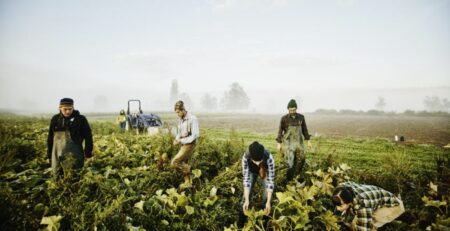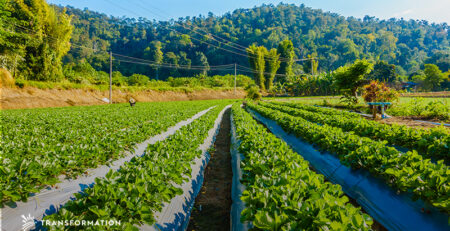Investing in Women Smallholder Farmers
Gender inequity is both a cause and an effect of food insecurity. Even though women smallholder farmers make up about 43% of agricultural workers globally, their contributions often go unpaid and unseen. Furthermore, systemic inequities result in unequal access to information and resources that could improve agricultural productivity and food security.
Gender inequity is one of the leading causes of poverty and food insecurity, with women disproportionately experiencing this burden. Across all continents, data paints a clear picture that women experience chronic food insecurity at higher rates than men. Conversely, evidence demonstrates that increasing female empowerment results in improved food security and nutrition for women and the larger population.
Investing in women smallholder farmers can address food security, improve economies, and address social inequities globally.
Underlying Causes of Food Security and Gender Equity
Food security and gender equity are inextricably intertwined. The underlying causes of food insecurity, low agricultural productivity, and the marginalization of women are:
- Unequal Power Structures: often do unpaid work, cannot decide how income is spent
- Environmental Degradation: decreased natural resources leads to increased resource competition
- Insufficient Investment: little access to programs, capital, and markets
Despite the significant roles women maintain as food producers and household food security advocates, systemic gender inequities underpin persistent food insecurity. While food insecurity disproportionately impacts women in developing nations, food insecurity is a global problem affecting many areas, including world economic growth, and requires urgent attention.
Potential for Increased Food Security
Even though women are disadvantaged by systemic gender inequities, women typically play a significant role in their communities. Therefore the empowerment of women also extends to empower those who depend on them. When women control additional income, research shows that they spend about 90% of it on food, health, clothing, and education for the family. In comparison, men spend an average of 40% of the income in these areas. This occurrence is an example of “the multiplier effect,” because the impact of investing in women not only benefits them individually, but also benefits their households, communities, and the larger society.
By opening up access to the resources required for women to successfully produce, process, and market food products, women have the potential to increase agricultural productivity on their farms by 20 to 30%. The outcome would be monumental, boasting a 2.5-4% increase in total agricultural production in developing nations and reducing hunger by 100-150 million people.
The Business Case
In addition to the compelling moral and social reasons for increasing gender equity in women smallholders, there are also commercial reasons to invest in change. Extensive research funded by the Bill & Melinda Gates Foundation found that investing in women smallholder farmers results in:
- Increased product quality: women supply superior crop quality due to their larger stake in family and community interests
- Increased productivity: with access to the same technical training as men
- Reduced management and coordination costs: female representation improves communication between company and out-growers
- A secure food supply base: demand for food is growing, and women are increasingly in charge of this supply base as men are more likely to migrate to seek urban employment
- Improved access to premium markets: supporting women creates a value-added product for the growing number of ethically-faced consumers
With so much to gain from supporting women stakeholder farmers, implementing strategies for engagement is crucial. However, investors can ensure significant opportunities for women without making considerable investments in women-specific programs or projects. Women require equal access to opportunities that investors and companies already provide to primarily male smallholders. Increasing accessibility and inclusion would create effective change in the short term.
Conclusions
Supporting gender equity and increasing women’s rights to land and assets is instrumental in expanding global food security and nutrition. Additionally, examples of empowerment for women without previous agricultural skills have proved successful. In Afghanistan, programs teaching “kitchen gardening” has supported the economic and community health of thousands. While initiatives to support women’s role in food production and food security are increasing, there is still room for growth. Investors can help to actualize greater accessibility of programs and opportunities for women for a better future.





Leave a Reply